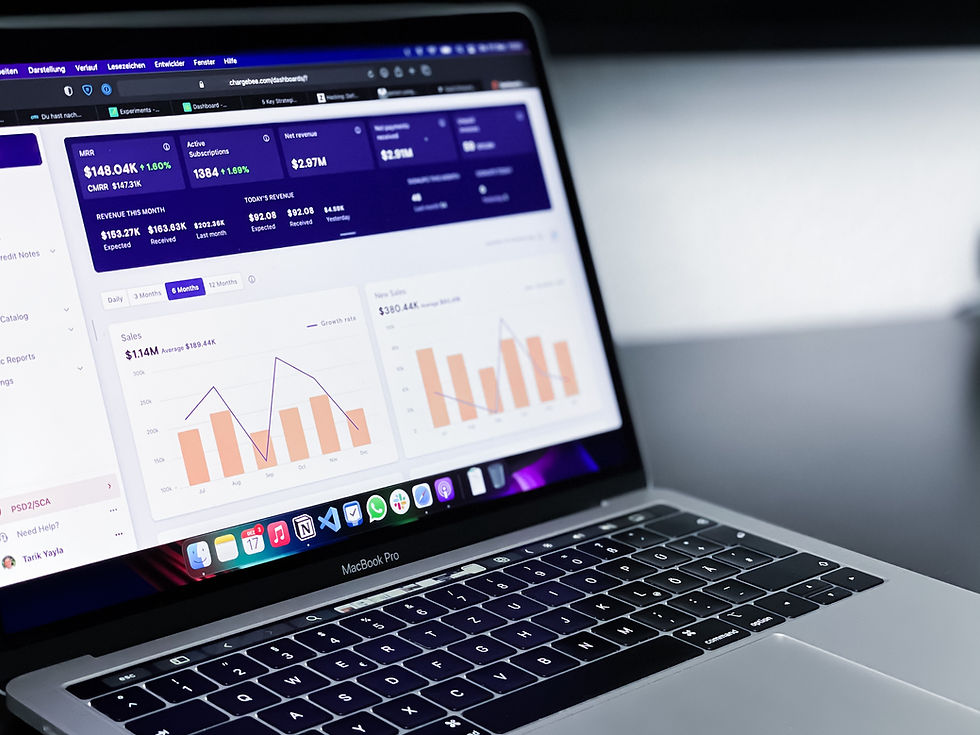Harnessing the Power of Analytics for Brick-and-Mortar Retail
- Travis Hall
- Apr 25, 2023
- 2 min read

In the age of e-commerce, brick-and-mortar retail stores face increasing pressure to deliver an exceptional customer experience to remain competitive. One powerful tool to achieve this is the use of data analytics. By gathering and analyzing data about customer behavior, preferences, and trends, retailers can optimize store operations, personalize marketing efforts, and enhance the overall shopping experience. In this blog, we will explore various ways brick-and-mortar stores can leverage analytics to better serve their customers.
In-Store Analytics
In-store analytics involves collecting and analyzing data about customer behavior within the physical store environment. Some common methods of gathering this data include:
Foot traffic analysis: Using cameras or sensors to track customer movement and dwell time in different store areas, helping retailers identify high-traffic zones and optimize store layout.
Heatmaps: Visual representations of customer activity data, allowing retailers to identify hotspots and areas for improvement.
Customer demographics: Collecting data on customer age, gender, and other demographic factors can help retailers tailor their offerings and marketing efforts.
Personalized Marketing and Promotions
Data analytics can help retailers create personalized marketing campaigns and promotions tailored to individual customer preferences. By analyzing data such as purchase history, browsing behavior, and loyalty program information, retailers can:
Send targeted offers and promotions to customers based on their shopping preferences and habits.
Create customized in-store experiences, such as personalized product recommendations or interactive displays.
Improve customer engagement and loyalty by offering tailored rewards and incentives.
Inventory Management and Demand Forecasting
Efficient inventory management is crucial for brick-and-mortar retailers to meet customer needs while minimizing costs. Data analytics can help retailers predict demand and optimize inventory levels by:
Analyzing historical sales data and identifying patterns and trends.
Incorporating external factors such as seasonality, weather, and local events.
Automating inventory tracking and reordering processes to maintain optimal stock levels.
Pricing Optimization
Data analytics can help retailers develop dynamic pricing strategies that take into account factors such as competitor pricing, customer demand, and inventory levels. By analyzing this data, retailers can:
Set prices that maximize profitability while remaining competitive.
Implement price adjustments in response to changing market conditions.
Offer personalized pricing or discounts to specific customer segments.
Enhancing the Omnichannel Experience
Many customers today engage with retailers across multiple channels, including online, mobile, and in-store. Data analytics can help retailers create a seamless and consistent experience across all channels by:
Integrating customer data from various touchpoints to create a unified customer profile.
Offering personalized recommendations and promotions across channels.
Ensuring consistency in pricing, inventory, and branding across all platforms.
The use of data analytics in brick-and-mortar retail stores can significantly enhance the customer experience, driving increased sales, loyalty, and overall business success. By leveraging insights from in-store analytics, personalized marketing, inventory management, pricing optimization, and omnichannel integration, retailers can create a shopping experience that not only meets but exceeds customer expectations.
To fully harness the power of analytics, retailers must invest in the right tools, technologies, and expertise, fostering a data-driven culture within their organization. By embracing data analytics, brick-and-mortar stores can remain competitive in an increasingly digital world and continue to thrive in the ever-evolving retail landscape.



